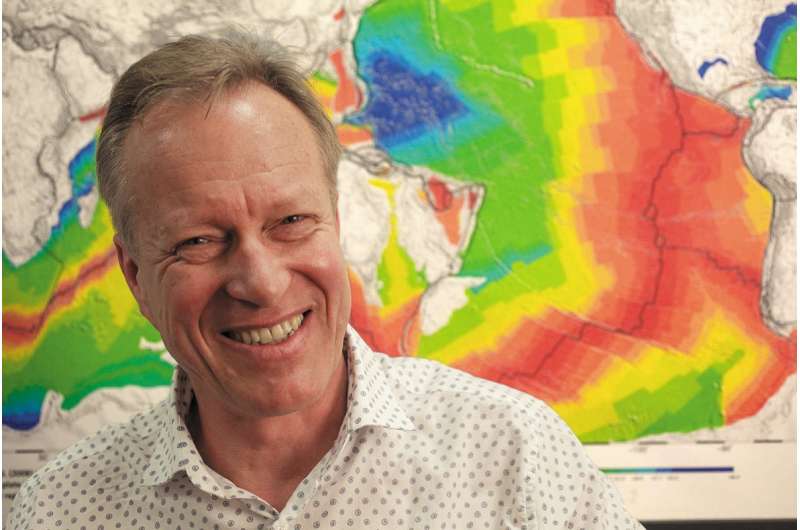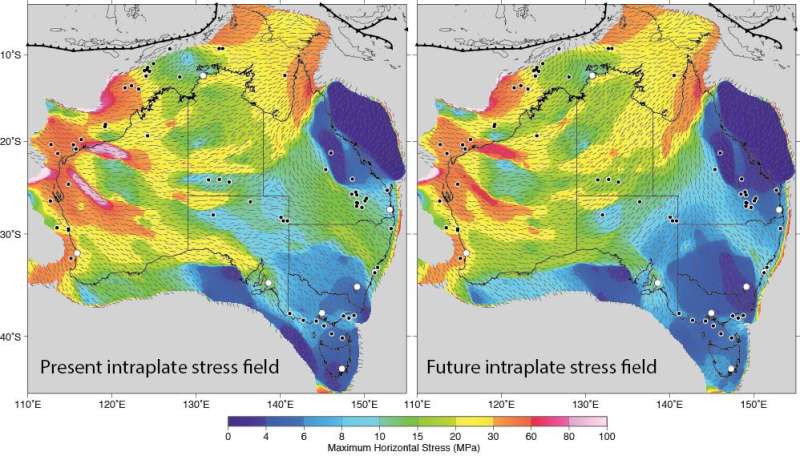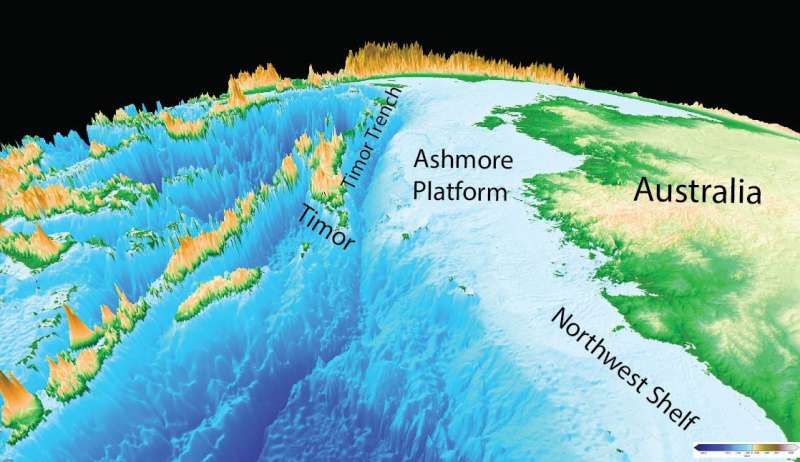Mitigating global warming by CO2 storage? Check for continental stress

If proposed CO2 sites are not properly assessed for long-term stability, future civilisations could still suffer the consequences of global warming.
Professor Dietmar Müller from the School of Geosciences at the University of Sydney and Scott Dyksterhuis from ExxonMobil have created a computer model that predicts how the Australian continent will be progressively stressed in the future – this is important for gauging the structural stability of proposed CO2 storage sites in any consideration of the technology as a response to climate change.
"Being a crystal ball gazer for the future is usually a difficult enterprise and so far nobody had ventured into the field of modelling Australia's, or any other continent's, future stress," Professor Müller said.
Instead it was generally assumed that carbon storage sites in the interior of continents are stable and would not suffer from enhanced "stressitis" in the future.
Based on their long-term collaboration on modelling past stresses of the Australian continent, the researchers realised that Australia is particularly prone to future changes in its stress field.
While Australia is not a continent disposed to large, destructive earthquakes, small quakes are widespread. This reflects the largely compressive tectonic stress in Australia, imparted on the continent by three collisions along the periphery of the Indo-Australian Plate, along the Himalayas, Papua New Guinea and New Zealand.

Small earthquakes are caused by successive movement along minor crustal faults. When active faults intersect reservoirs that hold fluids or gas, the latter may be gradually released.
This is where carbon capture and storage comes in. A 19% carbon storage contribution to CO2 reduction by 2050, as envisaged by the International Energy Agency, could require the construction of thousands of carbon storage sites.
CO2 storage would need to last for tens of thousands of years to avoid future CO2 leakage into the groundwater and atmosphere. Knowing the likelihood of future escape of stored CO2 due to fault reactivation would be a critical selection criterion for sites that have been proposed for carbon storage across Australia – 61 so far.
To assess the likelihood of future leakage of CO2 storage sites, the outlook for changes in crustal stress patterns would need to be known.
Australia, the continental margin has already been shortened by about 40 km over the last 2 million years, causing crustal uplift of Timor by nearly 3 km." Professor Müller said.
He added: "The severity of collision and mountain belt elevation will grow significantly in the future, while the Australian Plate continues to move northward at about 70 km over a million years, and the Timor Trench will gradually become a major collision zone."

The team adapted its previous models for paleo-stress to simulate the stress field one million years into the future, based on the projected growth in the intensity of plate tectonic collision along Timor.
Counter-intuitively, the largest changes are predicted for some parts of western, central and southeast Australia, all regions far away from plate edges. This reflects how growing collisional forces are deflected into a geologically heterogeneous continent.
Much of the northwestern portion of Australia, much more proximal to the collision zone that is driving future stress field changes, is predicted to experience only minor stress field changes. However, the intensity of stress is predicted to increase severely along the Northwest Shelf of Australia.
The researchers found that at least ten suggested carbon storage sites are located in regions where significant changes of in the stress regime can be expected, over a time period of 100,000 years, a period relevant for estimating the stability of storage sites.
The new computer model highlights the importance of considering future intraplate stress field changes for selecting carbon storage sites, especially within regions affected by ongoing mountain building processes as is the case for Australia, India, South America, Asia and southern Europe.
The digital stress models are freely available to allow end-users in industry, government and academia to evaluate the future fault reactivation risk for any location in Australia.
More information: Scott Dyksterhuis et al. Future intraplate stress and the longevity of carbon storage, Fuel (2017). DOI: 10.1016/j.fuel.2017.03.042
Provided by University of Sydney



















